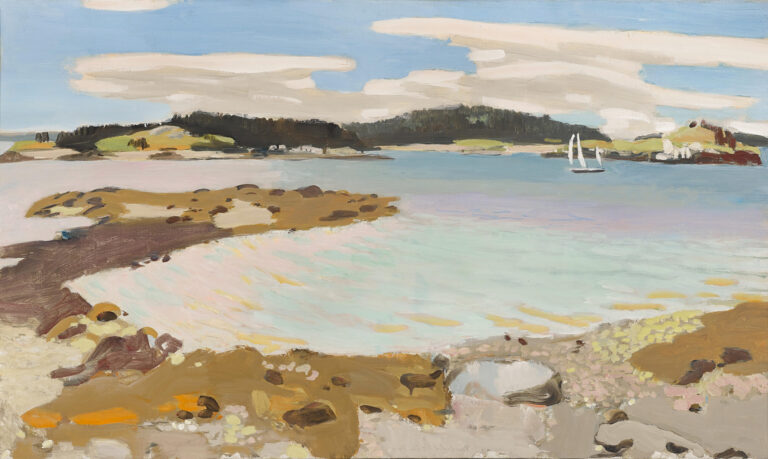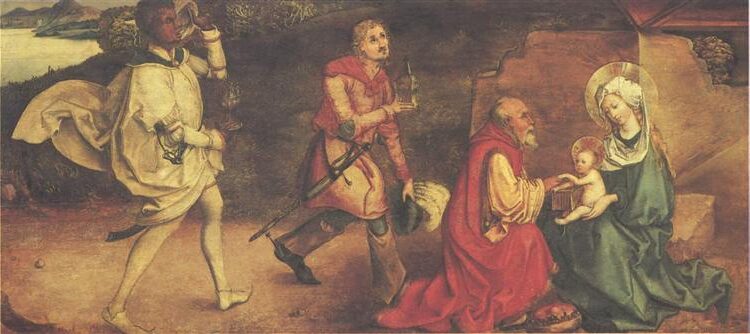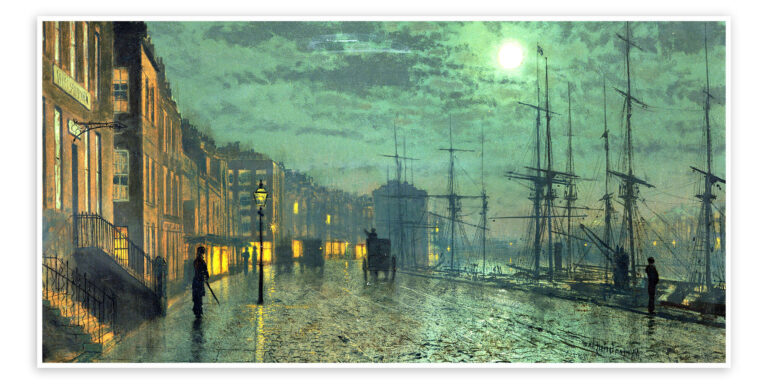Thomas Cole Painter: Pioneer of American Landscape Art
Born: February 1, 1801, Bolton le Moors, Lancashire, England
Death: February 11, 1848, Catskill, New York, U.S
Art Movement: Hudson River School
Nationality: American
Teacher: Self-Taught
Thomas Cole Painter: Pioneer of American Landscape Art
Life and Career of Thomas Cole
Thomas Cole emerged as a pivotal figure in American art during the early 19th century. His journey from England to America and subsequent artistic development shaped the landscape painting tradition in his adopted homeland.
Early Life and Education
Thomas Cole was born on February 1, 1801, in Bolton-le-Moor, England. His family immigrated to America, moving through Philadelphia and Ohio before settling in Pittsburgh.
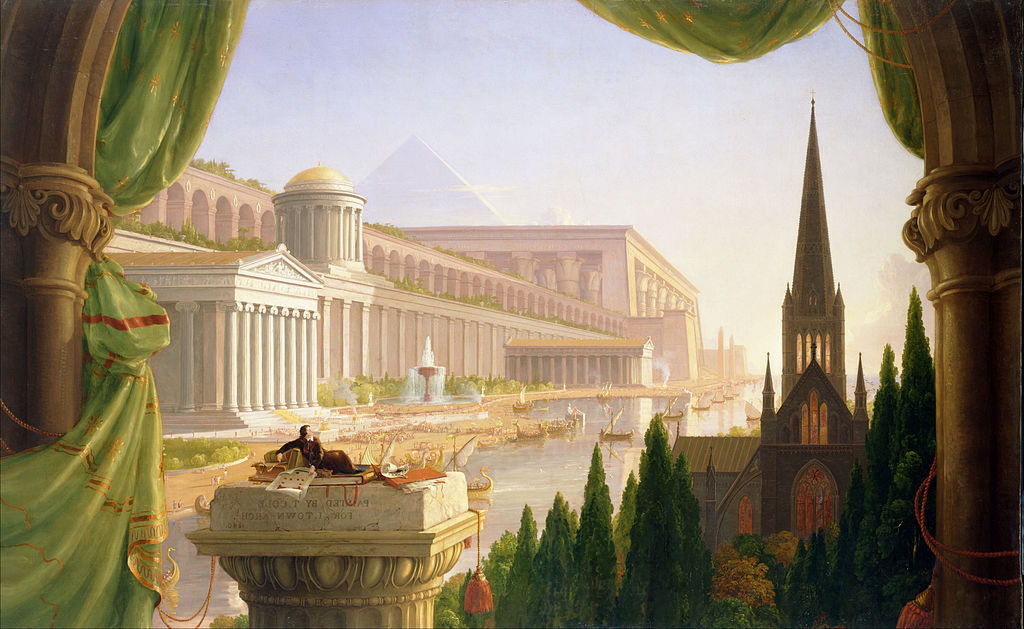
The Architect’s Dream (1840) by Thomas Cole
As a young man, Cole worked as an itinerant portrait artist to support himself. He received little formal artistic training, instead developing his skills largely through self-education and observation.
Cole’s early career was marked by financial struggle. He worked various jobs including as an engraver, which helped develop his eye for detail and technical precision that would later distinguish his landscape paintings.
Formation of Hudson River School
In the 1820s, Cole discovered the Hudson River Valley and Catskill Mountains of New York. The dramatic scenery profoundly inspired his artistic vision.
Cole is recognized as the founder of the Hudson River School, America’s first native school of painting. This artistic movement celebrated the American landscape as a subject worthy of serious artistic attention.
He established himself in Catskill, New York, where he found endless inspiration in the surrounding wilderness. His home at Cedar Grove (now the Thomas Cole National Historic Site) became his base for artistic exploration of the region.
Transition to Notable Works
Cole’s paintings evolved from straightforward landscape documentation to more complex allegorical works. His technical skill and unique artistic vision gained recognition among patrons and fellow artists.
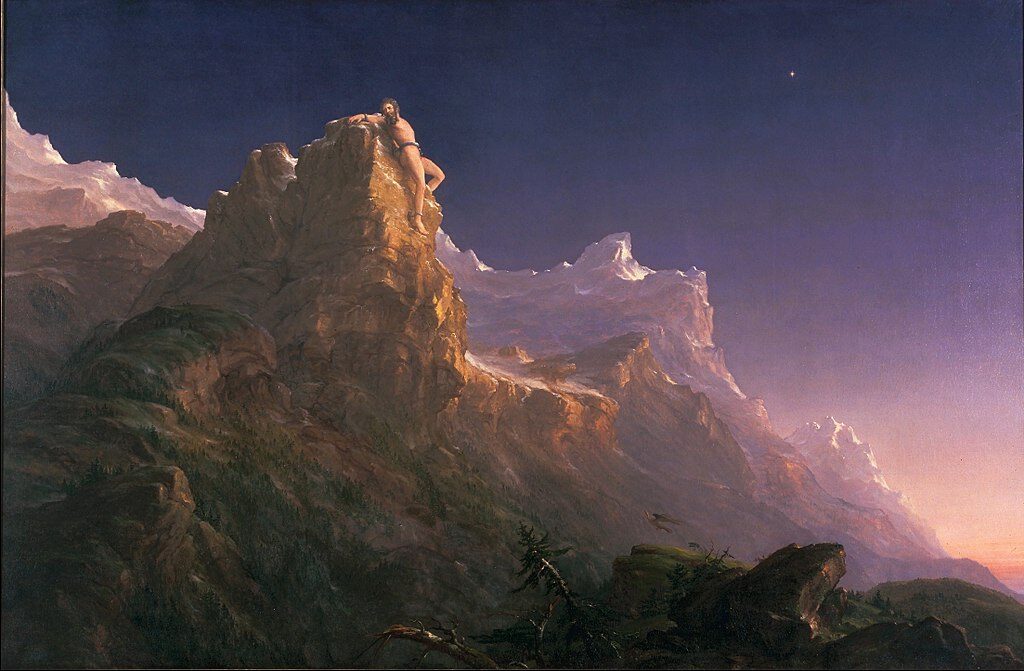
Prometheus Bound (1847) by Thomas Cole
Major series like “The Course of Empire” (1833-36) demonstrated Cole’s ability to use landscape as a medium for expressing philosophical and moral ideas. These works showed his artistic maturity and intellectual depth.
During this period, Cole also traveled to Europe, studying the works of Old Masters. This experience broadened his artistic perspective while strengthening his appreciation for American landscapes.
Influence and Legacy
Cole mentored younger artists including Frederic Church and Asher Durand, extending his influence on American art. His teachings helped establish landscape painting as a respected genre in American art.
His distinctive style—combining realistic observation with romantic sensibility—created a uniquely American artistic language. This approach influenced generations of artists who followed him.
Cole died unexpectedly in 1848 at age 47, cutting short his artistic career. Despite his relatively brief life, his impact on American art remains profound. The Hudson River School tradition he established continued to flourish well beyond his lifetime.
Major Works and Artistic Contributions
Thomas Cole created numerous influential paintings that established him as the founder of the Hudson River School movement. His work featured dramatic American landscapes and allegorical series that explored themes of nature, civilization, and human existence.
The Course of Empire Series
Cole’s ambitious five-painting series “The Course of Empire” (1833-1836) traces the rise and fall of a fictional civilization. The sequence begins with “The Savage State,” depicting wilderness with primitive human settlements.
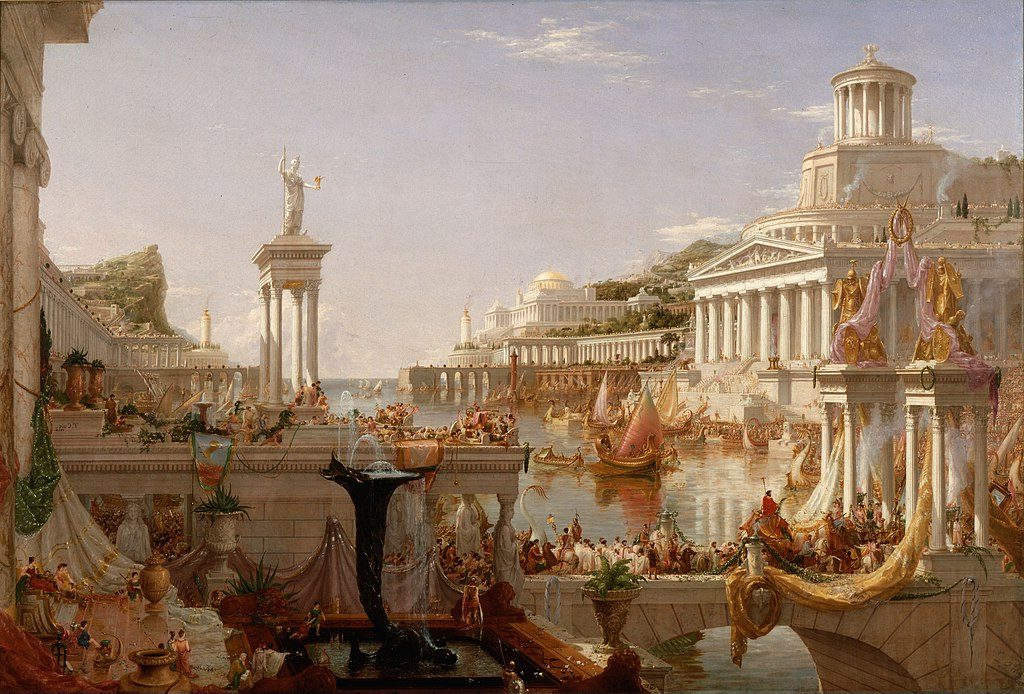
The Course of Empire: Consummation (1835–1836)
“The Arcadian or Pastoral State” follows, showing harmonious coexistence between humans and nature.
The middle painting, “The Consummation of Empire,” presents the civilization at its peak with magnificent classical architecture.
The final two paintings, “Destruction” and “Desolation,” show the civilization’s violent collapse and nature’s reclamation of the ruins. This series demonstrates Cole’s concern about America’s rapid development and represents his warning about unchecked expansion and materialism.
The Voyage of Life Series
“The Voyage of Life” (1842) represents another of Cole’s significant allegorical series. These four paintings use the metaphor of a river journey to represent the stages of human life:

The Voyage of Life: Youth (1842) by Thomas Cole
- Childhood – An infant sits in a boat guided by an angel
- Youth – A young man takes control of the vessel, pointing toward distant castles
- Manhood – The adult faces turbulent waters and dangerous rocks
- Old Age – The elderly man approaches calm waters leading to heaven
The National Gallery of Art houses one complete set of these paintings. This series reflects Cole’s spiritual beliefs and his interest in using landscape as a vehicle for moral and philosophical ideas.
Notable Landscape Paintings
Cole’s pure landscape works captured America’s natural grandeur with remarkable detail and emotional power. “View from Mount Holyoke” (1836) contrasts pristine wilderness with cultivated land, revealing his concern about environmental changes.
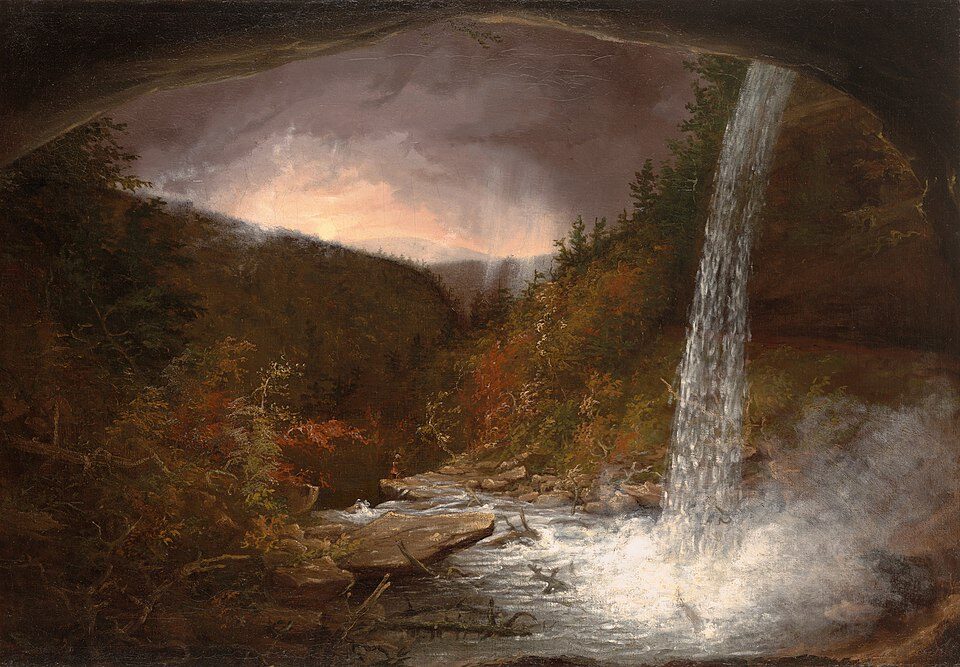
Kaaterskill Falls (1826) by Thomas Cole
“Kaaterskill Falls” (1826) depicts one of the most famous sites in the Catskill Mountains. The painting’s dramatic composition emphasizes the waterfall’s majesty and the surrounding wilderness’s untamed character.
“Lake with Dead Trees” (1825) demonstrates Cole’s ability to create haunting, melancholic scenes that still resonate with viewers today. His oil painting technique captured atmospheric effects and light with remarkable skill, influencing generations of American landscape artists.
Collaborations and Recognitions
Cole mentored several younger artists who would become important figures in American art. His relationship with Frederic Church was particularly significant, with Church becoming one of the most celebrated Hudson River School painters.
Cole’s work gained recognition during his lifetime from patrons such as Daniel Wadsworth and William Cullen Bryant. His paintings were exhibited at prestigious venues including the National Academy of Design, where he became a founding member in 1826.
After his death in 1848, Cole’s artistic legacy continued through the Hudson River School movement. His unique ability to combine realistic American landscape with allegorical storytelling established a distinctly American artistic tradition that valued both natural beauty and moral significance.
Artistic Style and Philosophical Approach
Thomas Cole’s artistic vision combined technical excellence with profound philosophical ideas about nature, civilization, and the American landscape. His work established a uniquely American artistic identity while drawing from European influences.
Romanticism and Nature
Cole embraced Romanticism’s emphasis on emotion, individualism, and nature’s sublime power. His paintings often featured dramatic natural settings where tiny human figures are dwarfed by majestic landscapes, highlighting humanity’s small place in the natural world.

A View of the Two Lakes and Mountain House, Catskill Mountains, Morning (c. 1844)
Unlike European painters who focused on cultivated landscapes, Cole celebrated America’s wilderness as spiritually significant. He believed untouched nature represented divine creation and moral purity.
Cole’s paintings frequently contained allegorical elements. He used changing weather, light conditions, and seasons to convey emotional and spiritual states. Dramatic skies, threatening storms, and golden sunlight became visual metaphors for human experiences and spiritual truths.
Catskill and Hudson River Influence
The Hudson River Valley and Catskill Mountains profoundly shaped Cole’s artistic development. After discovering these regions in 1825, they became his primary subjects and spiritual home.
Cole established his studio near the village of Catskill, where he could directly observe the mountains, forests, and river that inspired his most famous works. The Oxbow (1836) captures a distinctive bend in the Connecticut River with the Catskills visible in the distance.
The area’s dramatic topography—with its rocky cliffs, dense forests, and atmospheric conditions—provided Cole with endless visual material. He meticulously documented seasonal changes in the landscape, from spring’s vibrant greens to winter’s austere beauty.
Techniques and Sketches
Cole developed a rigorous artistic process combining direct observation with studio refinement. He produced numerous field sketches during his explorations, capturing immediate impressions of light, atmosphere, and topography.
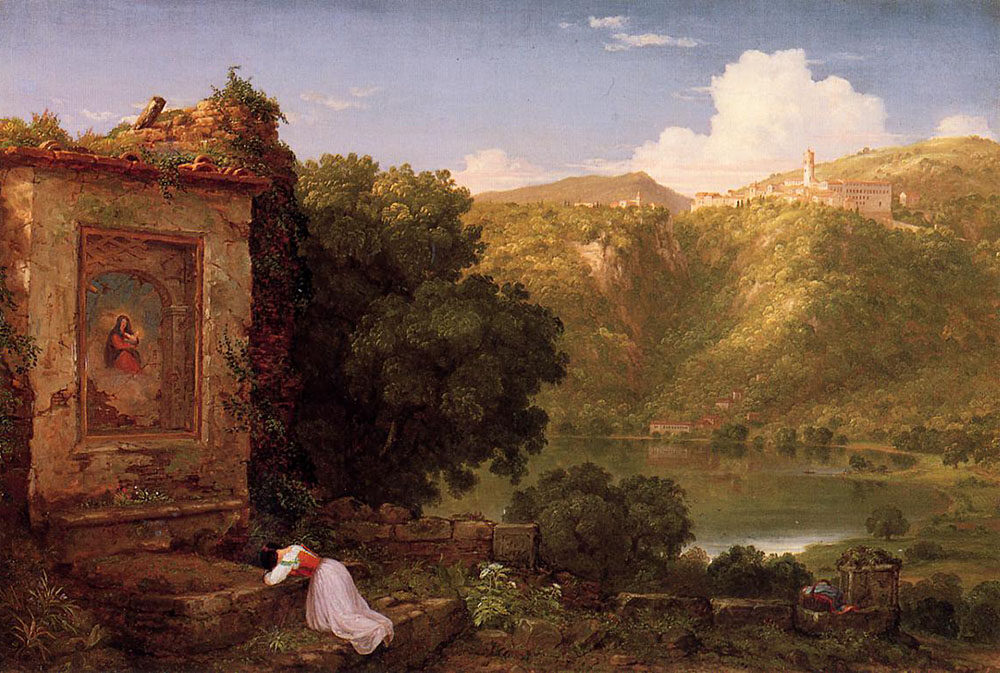
Il Penseroso (1845) by Thomas Cole
His technical approach balanced realistic detail with idealized composition. Cole would often rearrange elements from different sketches to create more dramatic, symbolically rich final paintings.
He mastered oil painting techniques that allowed him to achieve remarkable atmospheric effects. His layering methods created luminous skies and realistic depth through aerial perspective.
Cole’s preliminary work at Bolton and other locations shows his commitment to accuracy in depicting rock formations, trees, and water. These studies reveal his scientific interest in nature alongside his romantic and spiritual sensibilities.
Frequently Asked Questions
Thomas Cole established himself as one of America’s foremost landscape painters during the 19th century. His artistic contributions, techniques, and thematic explorations continue to fascinate art enthusiasts and historians alike.
What artistic movement is Thomas Cole associated with?
Thomas Cole is most strongly associated with the Hudson River School, an American art movement of the mid-19th century. He is widely recognized as the founder of this influential movement.
The Hudson River School emphasized romantic portrayal of the American landscape, particularly scenes along the Hudson River Valley and surrounding areas. This movement celebrated America’s natural beauty through detailed, atmospheric landscapes.
What themes are prevalent in Thomas Cole’s artwork?
Cole’s artwork prominently features themes of nature’s power, wilderness beauty, and the tension between civilization and untamed landscapes. He often depicted the American wilderness as a place of spiritual renewal.
Moral and religious allegories appear frequently in his works, particularly in his later paintings. The cycle of civilization—its rise, peak, and decline—was another recurring theme in Cole’s most ambitious works.
His paintings often contain subtle warnings about the dangers of unchecked human progress and environmental destruction. This ecological consciousness makes his work surprisingly relevant today.
Could you provide information on Thomas Cole’s contribution to the Hudson River School?
Cole established the foundation of the Hudson River School through his romantic depictions of the American landscape. His technical skill and philosophical approach influenced numerous other artists who followed in his footsteps.
He elevated landscape painting from mere documentation to a form of artistic expression filled with symbolic meaning. Cole’s work promoted the idea that America’s wilderness had spiritual and cultural significance equal to Europe’s ancient ruins.
As a mentor to other artists like Frederic Church and Asher Durand, Cole helped establish a distinctly American art tradition. His paintings helped Americans develop a sense of national identity connected to their natural landscapes.
What were the primary painting techniques employed by Thomas Cole?
Cole utilized careful observation combined with idealized compositions in his painting approach. He often sketched outdoors but completed his major works in his studio, allowing him to blend reality with imagination.
His paintings feature dramatic lighting effects, with glowing horizons and dramatic cloud formations. Cole employed rich color palettes with deep greens, luminous golds, and atmospheric blues to create emotional landscapes.
The artist was known for his meticulous attention to botanical and geological details while maintaining romantic, sometimes theatrical compositions. His layering technique created depth and atmospheric perspective that made his landscapes feel immense.
Can you detail the significance of ‘The Course of Empire’ series by Thomas Cole?
“The Course of Empire” represents Cole’s most ambitious allegorical series with five paintings depicting a civilization’s rise and fall. The series begins with “The Savage State” and ends with “Desolation,” tracking a complete civilizational cycle.
This series expressed Cole’s concerns about America’s rapid development and environmental destruction. It warned against the hubris of empire-building while suggesting that nature ultimately reclaims human achievements.
The paintings serve as a moral lesson about the consequences of human pride and environmental disregard. Art historians consider this series a masterpiece of American painting and a profound philosophical statement.
What is the legacy of Thomas Cole in the context of American art history?
Cole transformed American landscape painting. He also helped establish a national artistic identity. His work inspired generations of American painters to find meaning and beauty in their native landscapes.
His Hudson River School influenced American visual culture well into the 20th century. Cole’s environmental concerns and critique of unchecked progress continue to resonate with contemporary audiences.
The preservation of his home and studio as the Thomas Cole National Historic Site maintains his legacy for future generations. His combination of artistic skill and philosophical depth ensures his work remains relevant in discussions of American identity, environmentalism, and artistic development.





